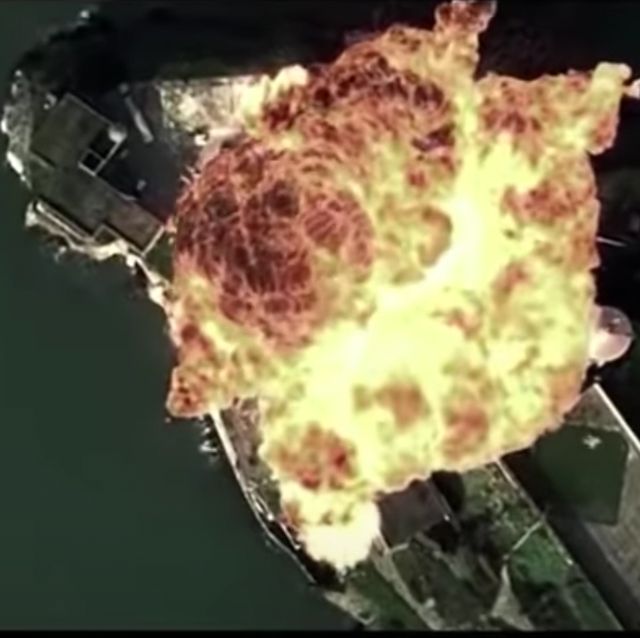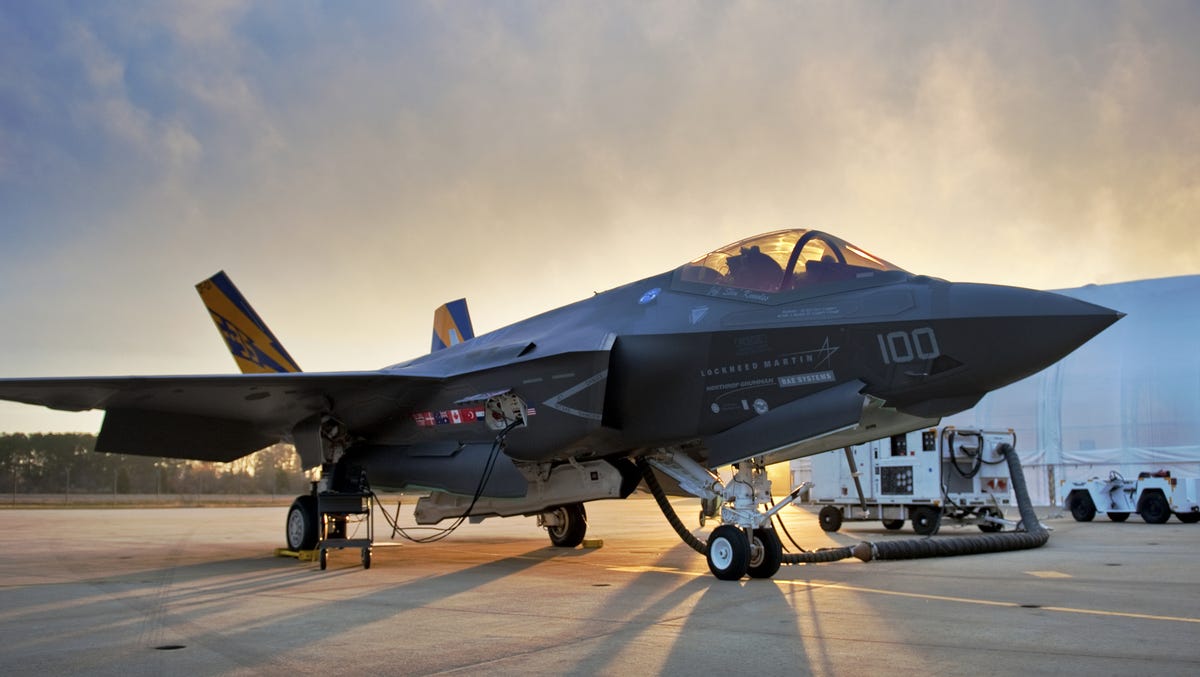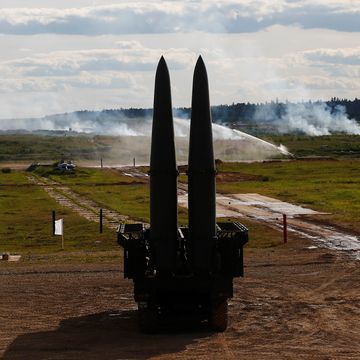- A new Chinese Air Force video depicts bombers attacking targets on the island of Guam and Hawaii.
- The video is unusual in that it shows an attack on U.S. soil.
- The propaganda video has been criticized for using clips from American action films like The Hurt Locker and The Rock.
A new video produced by the People’s Liberation Army Air Force (PLAAF) takes the unusual—and highly inflammatory—step of showing Chinese H-6K heavy bombers striking American targets. But there's a twist.
➡ YOU LOVE top-notch defense stories (otherwise you wouldn't be here). Get the most elite military content on the internet, any time you want it.
The video shows missiles striking both Guam and Hawaii, destroying U.S. military property, and potentially killing or injuring U.S. troops. The patriotic, chest-thumping message is undercut, however, with the realization that the video bizarrely includes key scenes from American action movies.
According to Hong Kong’s Apple Daily, the PLAAF posted the video on its official WeChat and Weibo social media accounts over the weekend. The video starts out innocently enough, with dawn breaking at a PLAAF bomber base. Ground crews remove camouflage coverings from a H-6K strategic bomber, prepare it for flight, and the big, lumbering, 1950s-era bomber takes to the skies as civilians watch from below.
But the video takes a darker turn at the 1-minute mark, when it's revealed the bomber is actually on a combat mission. A quick cut shows a missile whooshing out from underneath the bomber, streaking toward what looks like a coastal military base. Next, the video shows several aircraft holding stations at a military air base as viewed through an infrared targeting pod. A huge explosion rocks the target and the bomber flies home. Mission accomplished.
Within 24 hours, the video had more than 4 million views. While the PLA is no stranger to propaganda films filmed in the quick-cut style of American action director Michael Bay, it has never directly depicted Chinese forces intentionally engaging U.S. forces. Until now.
The targets in the film are not fictional. The first shot, a missile streaking through the air, depicts Marine Corps Base Hawaii as the target. Located on the island of Oahu, MCB Hawaii is the Marines’ largest facility in the Hawaiian islands.
The next shot of the holding stations at an air base is a real-world shot of Andersen Air Base on the island of Guam. In fact, Google Maps currently shows several B-1B Lancer bombers approximately 2,000 feet west of the impact zones, just out of shot.
As bellicose as the video is, its message loses its bite once you register the source of some of the scenes. As China's own citizens quickly pointed out, the scene with the missile flashing toward Marine Corps Base Hawaii comes from Transformers: Revenge of the Fallen; the bouncing rubble scene comes from The Hurt Locker; and the overhead shot of a towering explosion is from The Rock.
One Twitter user synced a clip from The Hurt Locker with the PLAAF video:
Is the PLA capable of striking Hawaii? The answer is no. Mostly.
Oahu is 8,300 kilometers from the closest H-6K base. The H-6K bomber, whose original design dates back to the 1950s, is incapable of reaching Oahu, even equipped with CJ-10 air launched cruise missiles. China is now developing a hypersonic air-launched ballistic missile for the H-6N variant of the old bomber, the CH-AS-X-13, but the H-6N/CH-AS-X-13 combo still only has a projected total range of just under 6,000 kilometers.
Only one Chinese weapon can hit Hawaii: a DF-5 intercontinental ballistic missile armed with a 5-megaton thermonuclear warhead.
One target within range of China's bombers is Andersen Air Base. Guam is only 3,200 kilometers from Asia, meaning H-6Ks could fly circles over the Chinese mainland, far from U.S. forces, and fling ballistic missiles at the westernmost outpost of American territory—housing important air and naval bases—in the Pacific.
📚 Read Up: The Best Military History Books
The bumbling way in which the PLAAF used video from Hollywood films forces the question: Did the Chinese military intend to show its forces attacking American forces, or was it an accident?
The footage of an air base under attack could've used satellite imagery of any civilian or military airport on the planet, but it seems likely that the PLA deliberately chose Andersen Air Base. Often home to U.S heavy bombers like the B-1B stationed on the island on a rotational basis, Andersen is a thorn in China's side and a likely jumping off point for any U.S. strikes against China.
Although comical, the propaganda video still has a serious message: China's military isn't just for show, and Beijing knows exactly what targets it would hit in wartime.

Kyle Mizokami is a writer on defense and security issues and has been at Popular Mechanics since 2015. If it involves explosions or projectiles, he's generally in favor of it. Kyle’s articles have appeared at The Daily Beast, U.S. Naval Institute News, The Diplomat, Foreign Policy, Combat Aircraft Monthly, VICE News, and others. He lives in San Francisco.




















